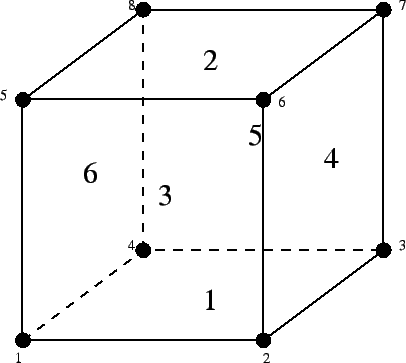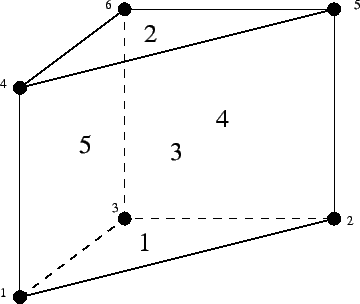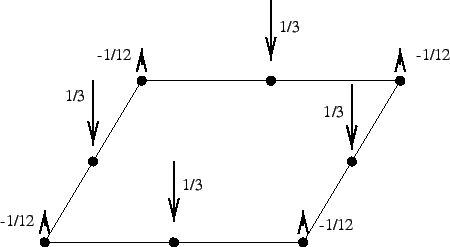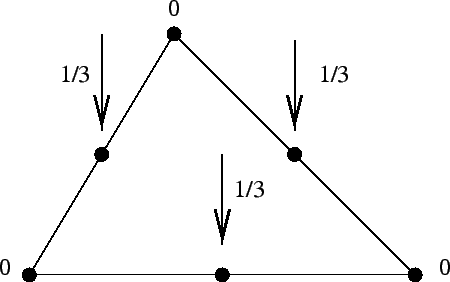



Next: Centrifugal distributed loading
Up: Loading
Previous: Point loads
Contents
Facial distributed loading
Distributed loading is triggered by the *DLOAD
card. Facial distributed loads are entered as pressure loads on the
element faces, which are for that purpose numbered according to
Figures 125, 126 and 127.
Figure 125:
Face numbering for hexahedral elements
 |
Figure 126:
Face numbering for tetrahedral elements
 |
Figure 127:
Face numbering for wedge elements
 |
Thus, for hexahedral elements the faces are numbered as follows:
- Face 1: 1-2-3-4
- Face 2: 5-8-7-6
- Face 3: 1-5-6-2
- Face 4: 2-6-7-3
- Face 5: 3-7-8-4
- Face 6: 4-8-5-1
for tetrahedral elements:
- Face 1: 1-2-3
- Face 2: 1-4-2
- Face 3: 2-4-3
- Face 4: 3-4-1
for wedge elements:
- Face 1: 1-2-3
- Face 2: 4-5-6
- Face 3: 1-2-5-4
- Face 4: 2-3-6-5
- Face 5: 3-1-4-6
for quadrilateral plane stress, plane strain and axisymmetric elements:
- Face 1: 1-2
- Face 2: 2-3
- Face 3: 3-4
- Face 4: 4-1
for triangular plane stress, plane strain and axisymmetric elements:
- Face 1: 1-2
- Face 2: 2-3
- Face 3: 3-1
for beam elements:
- Face 1: pressure in 1-direction
- Face 2: pressure in 2-direction
For shell elements no face number is needed since there is only one kind of loading:
pressure in the direction of the normal on the shell.
Applying a pressure to a face for which a pressure was specified in a
previous step replaces this pressure. The parameter OP=NEW on the
*DLOAD card removes all previous distributed loads. It only takes
effect for the first *DLOAD card in a step. A buckling step always removes all previous loads.
In a large deformation analysis the pressure is applied to the deformed face of the element. Thus, if you pull a rod with a constant pressure, the total force will decrease due to the decrease of the cross-sectional area of the rod. This effect may or may not be intended. If not, the pressure can be replaced by nodal forces. Figures 128 and 129 show the equivalent forces for a unit pressure applied to a face of a C3D20(R) and C3D10 element. Notice that the force is zero (C3D10) or has the opposite sign (C3D20(R)) for quadratic elements. For the linear C3D8(R) elements, the force takes the value 1/4 in each node of the face.
Figure 128:
Equivalent nodal forces for a face of a C3D20(R) element
 |
Figure 129:
Equivalent nodal forces for a face of a C3D10 element
 |




Next: Centrifugal distributed loading
Up: Loading
Previous: Point loads
Contents
guido dhondt
2014-03-02
